By Ally Grubman


Exploring neuroscience while exploring Paris


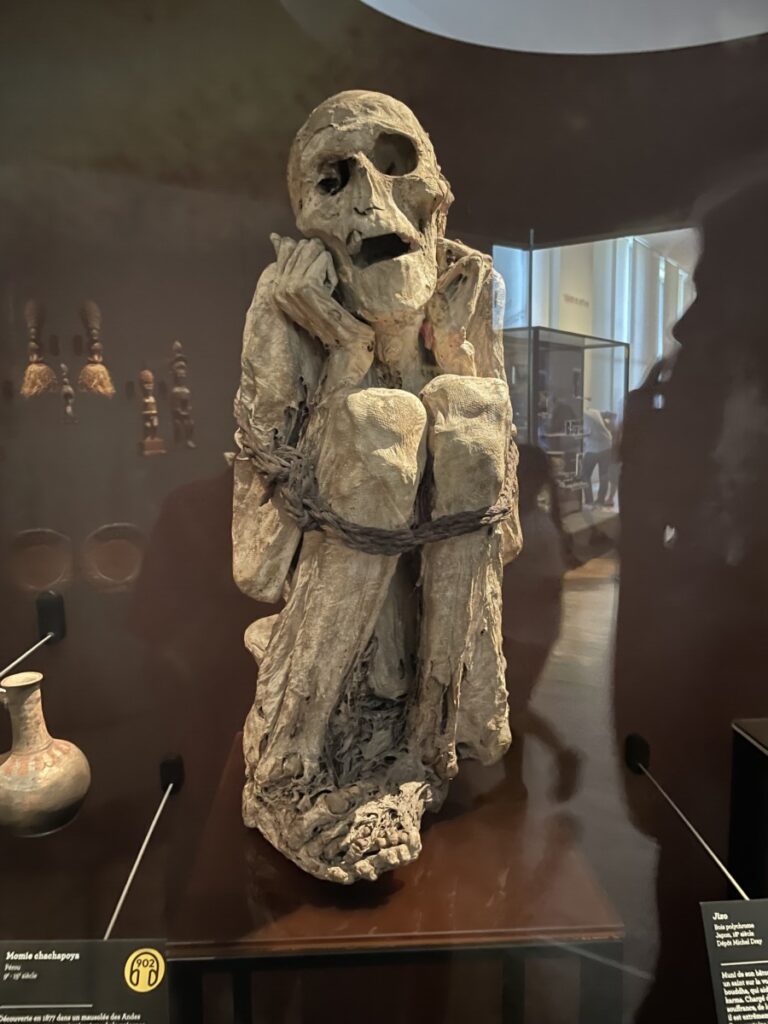
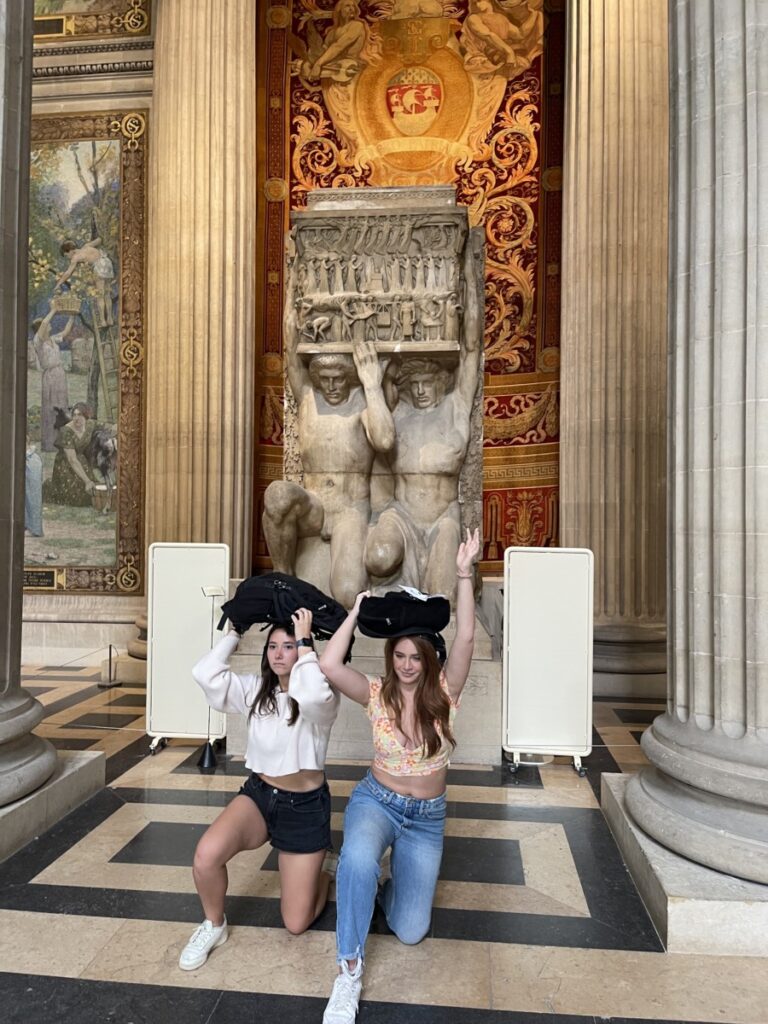
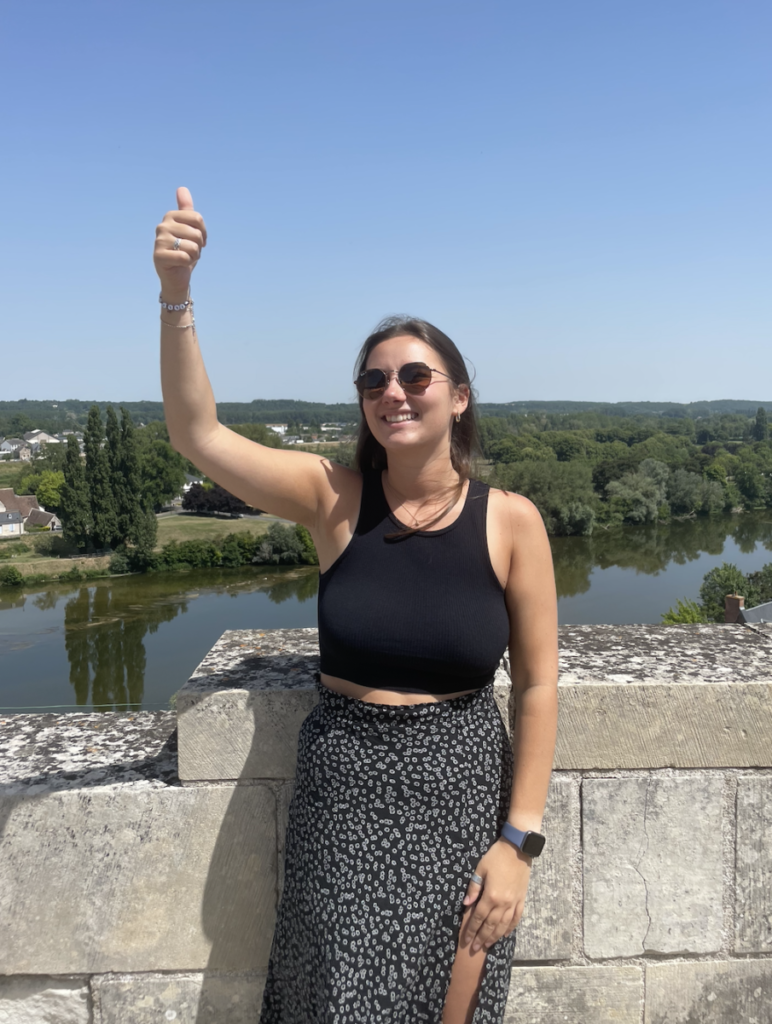
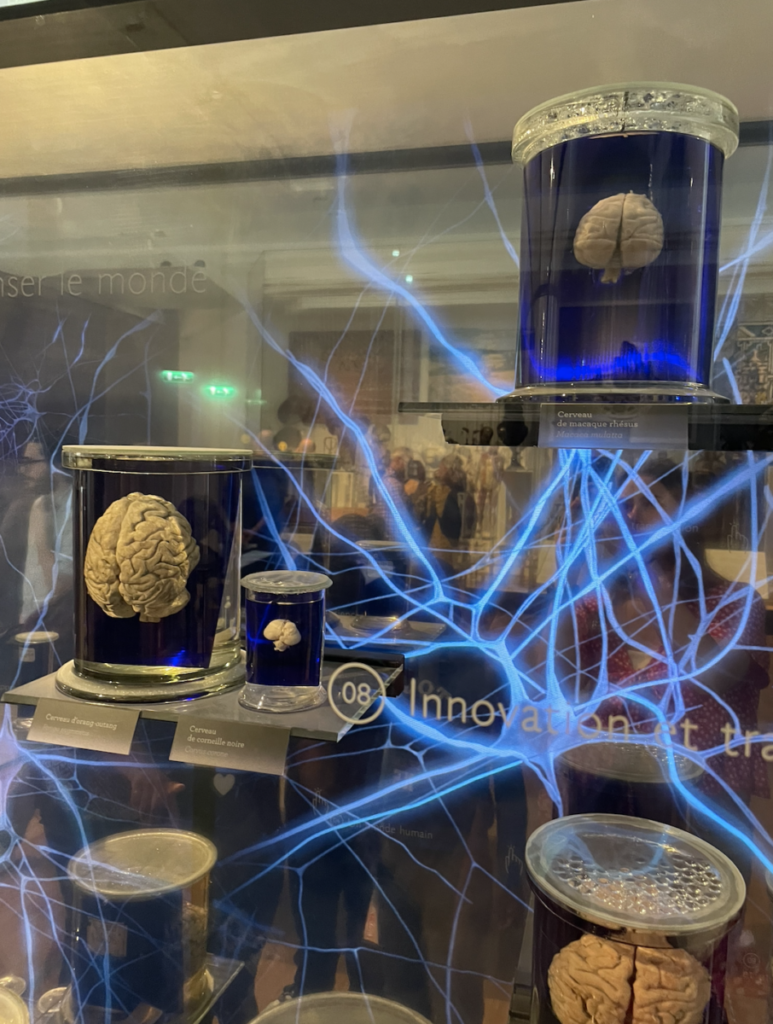
This week, our class had the pleasure of visiting the infamous, Pantheon. After taking a few great group photos, the class headed into the massive, beautiful building. The huge columns and incredible architecture were surely a sight to see. When walking through the doors and into the Pantheon itself, we were all stunned by the walls, ceilings, and incredible artwork throughout the whole building. After taking it all in, we went downstairs into the crypt, cooling off a little from the Paris heatwave we’re unfortunately going through. Walking through the crypts, it was so interesting to see the differences in mausoleums and the biographies of the people within them.

Interestingly, Marie Curie is one of the six women resting in the Pantheon. If you don’t know, Marie Curie was a physicist and chemist (born in 1867), who won two Nobel prizes in her time. Specifically, she discovered the elements polonium and radium. Her work helped lead to the development and use of radiotherapy for cancer treatment. Unfortunately, her work on radiation got the best of her and led to an early death. She developed leukemia from repetitive radiation exposure and passed away in 1934 when she was just 66. Even with her career being cut short, she was able to make immense strides in oncology treatments. Without her work and success, it is likely that cancer treatments would not be nearly as developed, or even possible, today. (Fun fact, Marie Curie’s coffin is lined with lead because her body’s still considered radioactive today)
And since then, our discoveries and technologies have only increased within the sphere of radiotherapy. It is believed that the discovery of radium has helped treat thousands of patients worldwide, only in the 80 years since it first became in use. However, these techniques have changed since the first uncovering of these elements. Mainly, radium is often no longer used in the way that Curie used it during her time. The radium and its radioactive properties are too much of a health concern and too easily mishandled. However, in certain careers and instances, radium is still successfully used safely and effectively.
But overall, the Pantheon strongly reflects French culture and history. With people such as Marie Curie, the Pantheon has an incredible hold on the historical context of France. Each person in the crypt had a unique influence on the overall values, traditions, and society of France. Would highly recommend a trip to the Pantheon if you ever get the opportunity!
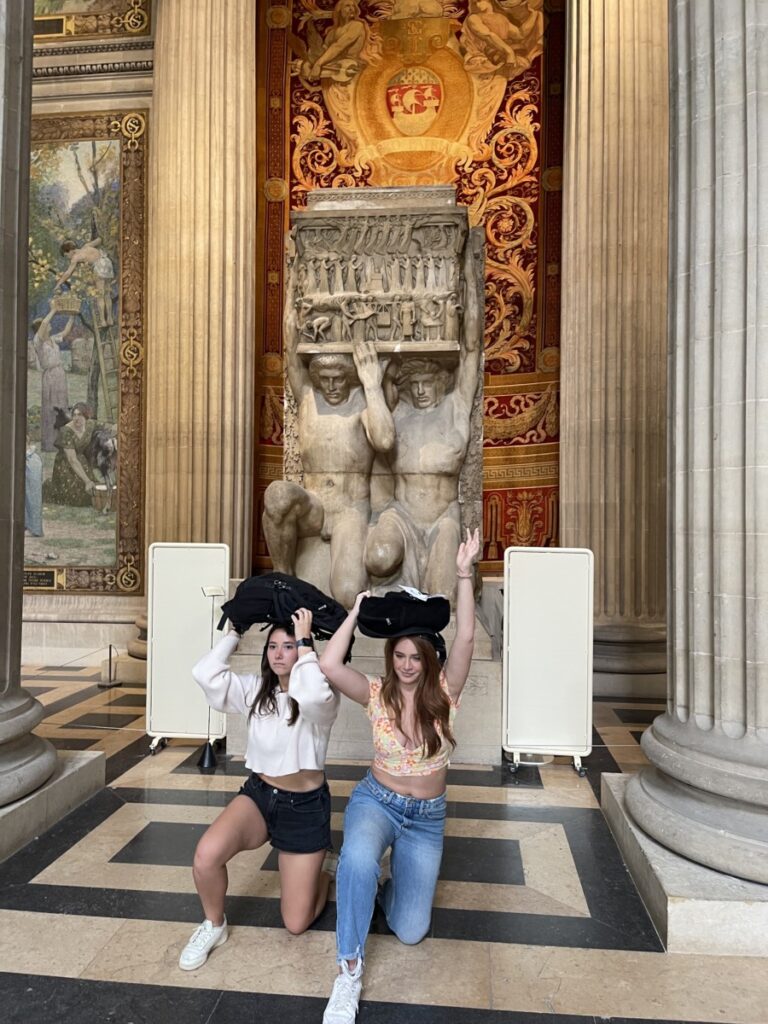
Citations:
Gasinska, A.. (2016). The contribution of women to radiobiology: Marie Curie and beyond. Reports of Practical Oncology & Radiotherapy, 21(3), 250–258. https://doi.org/10.1016/j.rpor.2015.11.006
Mazeron, J. J., & Gerbaulet, A. (1999). Le centenaire de la découverte du radium [The centenary of the discovery of radium]. Cancer radiotherapie : journal de la Societe francaise de radiotherapie oncologique, 3(1), 19–29. https://doi.org/10.1016/s1278-3218(99)80031-6
Last Friday the class took a trip to a French Rugby match, or so we thought. About 2 minutes into the game, there were comments flying around our NBB section like “Are we sure this is rugby?”, “When are they going to pick up the ball??”, and my personal favorite, “Guys, they’re just warming up with soccer, don’t worry.” Yep, you guessed it, we made our way to the France vs. Denmark fútbol (soccer) game. So awkward for us.

But even though we went thinking it was a rugby game, there was still some relevance to our class that gave me further insight into what we’ve been learning. In our NBB402W class last week, we read a paper on rugby players and the correlation between concussions and later cognition and neurodegenerative illnesses. Although we didn’t get to actually see any rugby players get head injuries, we did however see lots of soccer players use their heads to hit the ball. While this might not be as aggressive or harmful as rugby, there’s no way it’s good for you. For instance, Broglio et al. (2003) found that over a 300-game career, a soccer player experiences roughly 2000 headers, which can add up to cause a lot of damage. This only includes games, not even considering those sustained during practice. This repeated injury can lead to real problems in the future, specifically neurodegeneration. When I say neurodegeneration and neurodegenerative diseases, think: Alzheimer’s, ALS, and Parkinson’s (and so many more). This is something we also found in our rugby paper. Rugby players are rarely required to wear protective or effective helmets. Additionally, since it is very much a contact sport, there has been an increased need for research on the implications of playing such a dangerous game. Tomasin et al. (1989) outline the importance of more awareness on the topic, specifically concerning rugby players and the risk they are putting themselves in. Coaches, physicians, and players need to be more aware of the dangers and the serious possibility of brain damage and degeneration in the player’s future.

However, while we counted the headers and enjoyed the game, we had a great time hanging out in a non-school setting, eating some very overpriced stadium food, and laughing about the fact that we were, in fact, not at a rugby game. It’s too bad that France lost, but all in all, it was a great game and a ton of fun for all of us!!
Citations:
Broglio, S. P., Ju, Y. Y., Broglio, M. D., & Sell, T. C. (2003). The Efficacy of Soccer Headgear. Journal of athletic training, 38(3), 220–224.
Tomasin, J. D., Martin, D. F., & Curl, W. W. (1989). Recognition and Prevention of Rugby Injuries. The Physician and sportsmedicine, 17(6), 114–126. https://doi.org/10.1080/00913847.1989.11709809
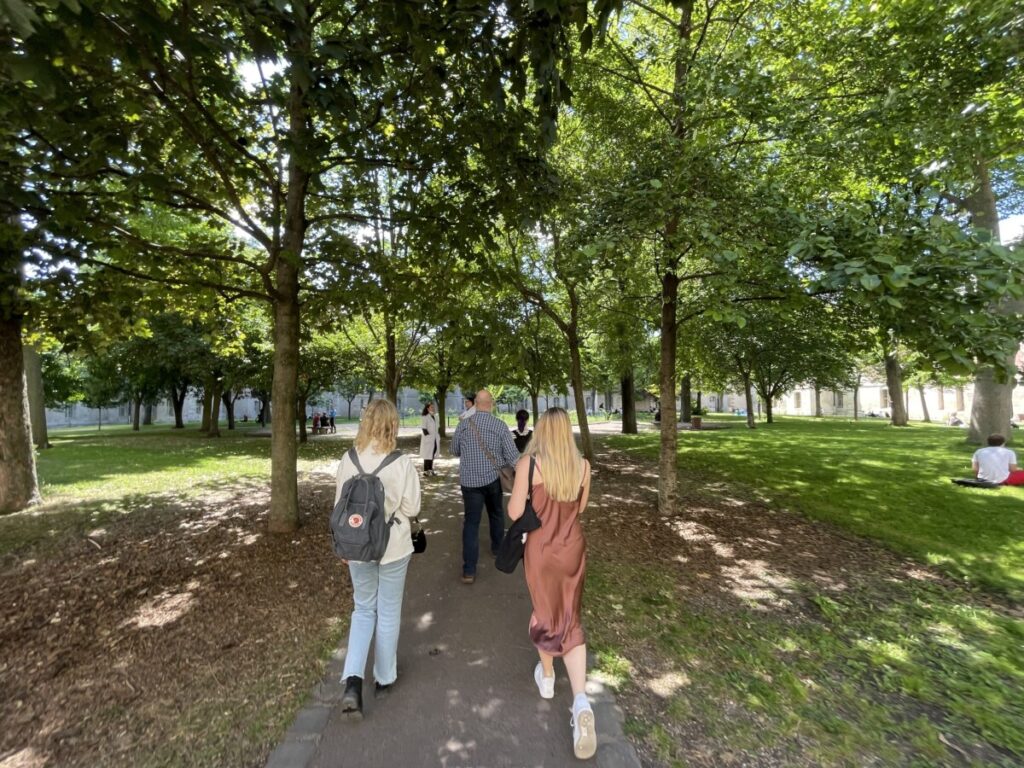
This was a picture I took on the way to the dermatology museum on the Saint-Louis Hospital campus in Paris. While we didn’t get to actually visit the museum on this trip, the hallway outside of it had many pictures and portraits of patients with dermatological illnesses. These illnesses were interesting to look at and related to the paper we were talking about in class at the time. Mainly, some of the portraits of the patients had chancres, the main symptom of early syphilis, which is what our last paper was about. This helped me visualize the illness we had just been talking about and put it all into perspective. Can’t wait to go back and actually see the museum next time!
This past week, we went to Musee du Chocolat in the 10th arrondissement. Within the museum, we were able to walk around, learn about the history and process of chocolate making, and my favorite part, make our own chocolate bars and chocolate-dipped goodies.
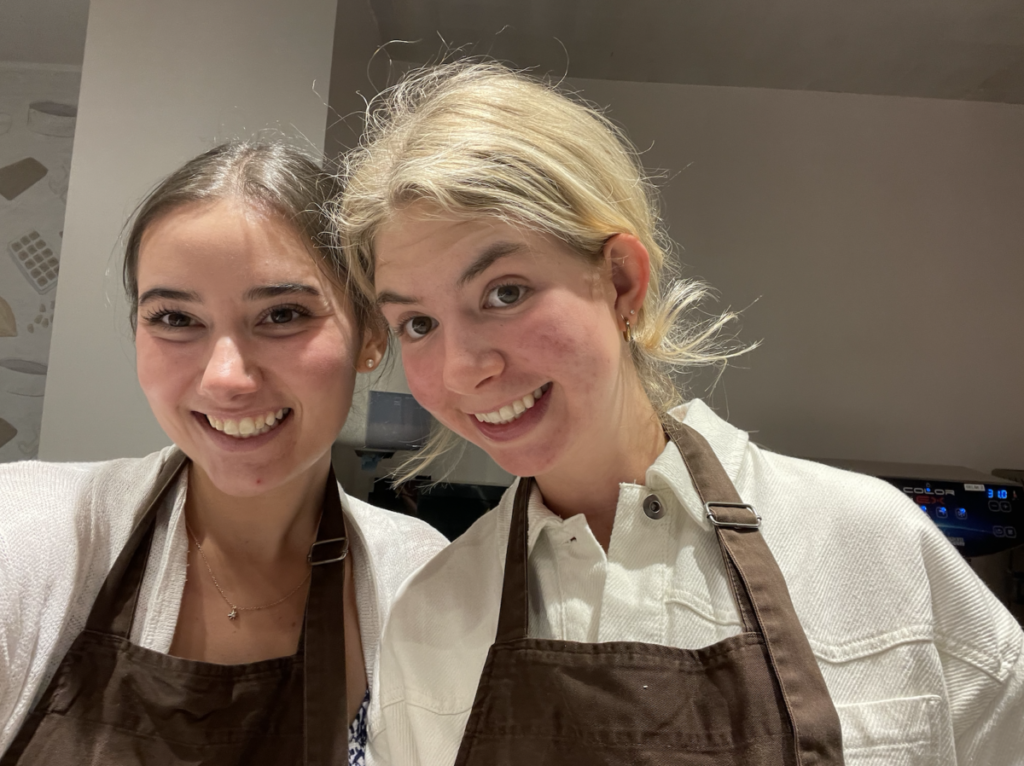
We were given the opportunity to dip marshmallows, candied orange slices, and chocolate squares in milk or dark chocolate and decorate them however we wanted to. We then made and decorated our own chocolate bars, getting fancy and mixing different types of chocolates. This was a fun and yummy experience for all of us!
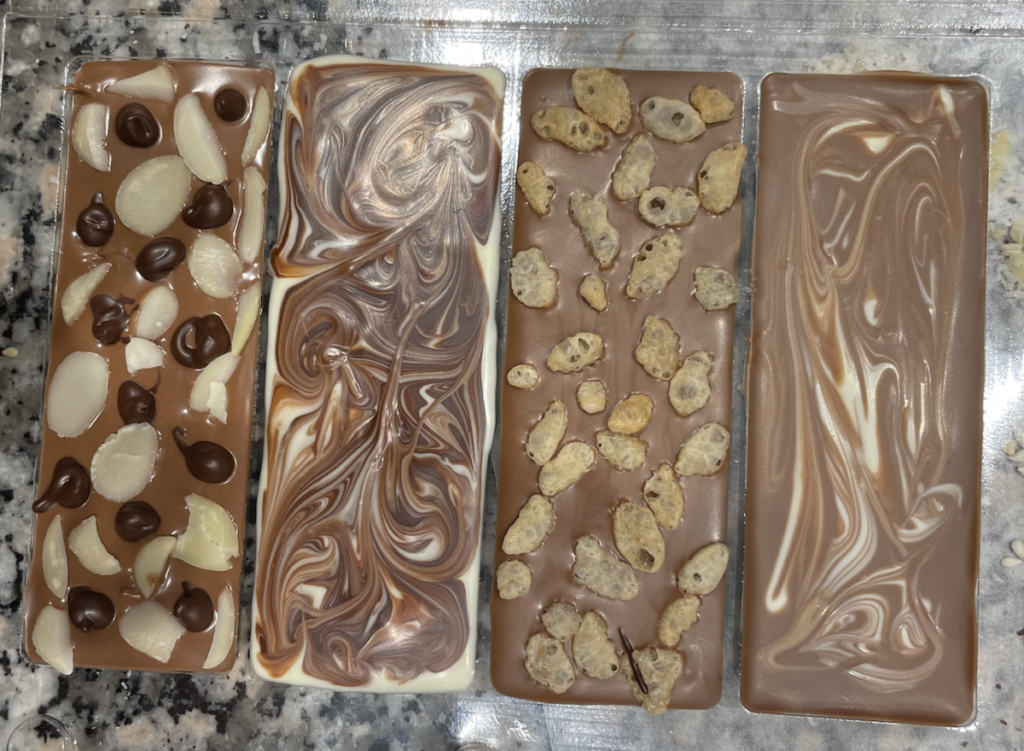
From an NBB perspective, I learned and feel more confident about my knowledge of chocolate and how it affects the brain. Specifically, within our neuroethics class, we have been talking about drugs and how some have the capability to change or enhance moods. Chocolate is also known to be addictive, something else that it can have in common with certain types of drugs. Wong and Lua (2014) found that chocolate has an incredibly complex relationship with the brain and the way in which it affects an individual’s mood. Each individual is different and can be affected in their own unique and inspiring way. This was something that I found immensely interesting and wondered about after our trip to the Musee du Chocolat. Additionally, Macht and Mueller (2007) found that it was specifically the palatability of the chocolate that immediately improved negative mood within their study conducted on 48 healthy men and women. This reminded me of our assigned article 1 from our NBB402W class, which discussed the effect that cheese has on the HPA axis and stress. Both showed that the palatability of specific foods has the ability to either reduce stress or enhance mood. This is clearly a topic of research that is important for everyone to look at with a closer eye and hope that it is true!
The chocolate museum was a great experience because it taught me a lot about chocolate and piqued my curiosity about the topic. It was also very fun to be able to learn how chocolate is made and see how it was done by a professional. Plus, the goodie bag of chocolates was not bad either! Overall, I think I speak for everyone in the class when I say we really enjoyed the Musee du Chocolat and would recommend it to anyone visiting Paris!
Citations:
Macht, M., & Mueller, J. (2007). Immediate effects of chocolate on experimentally induced mood states. Appetite, 49(3), 667–674. https://doi.org/10.1016/j.appet.2007.05.004
Wong, S. Y., & Lua, P. L. (2011). Chocolate: food for moods. Malaysian Journal of Nutrition, 17(2), 259–269.